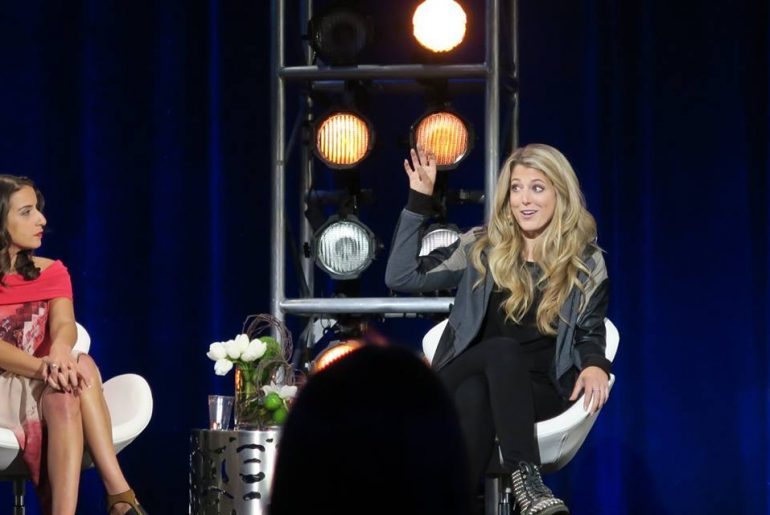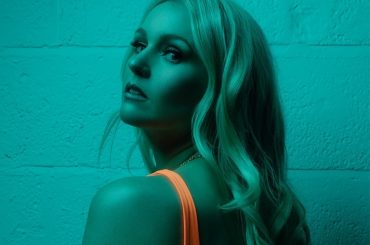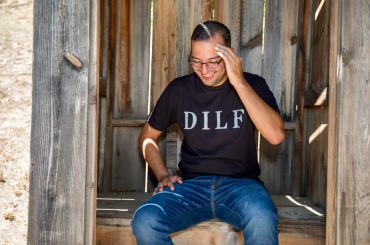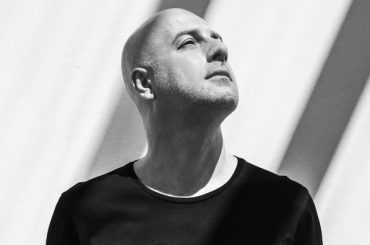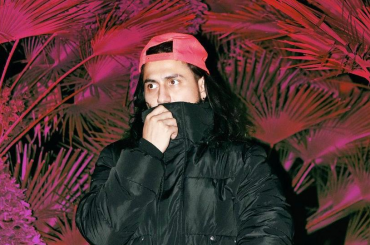Although being a fixture of AAVE for years prior to its widespread adoption by mainstream culture, “woke” has found itself at the forefront of 2017’s online political vernacular in regards to keep oneself abreast of social justice causes (particularly in regards to racial and gender issues).
It’s no secret that the music industry has its own particularly nasty streak of sexism when it comes to women in the industry, and clubland is addled with its own unique set of challenges and problems for women and gender-nonconforming persons.
Enter Nap Girls: a collaborative group that aims to support and empower this community by nurturing connections inside of it.
Even if you aren’t familiar with Nap Girls’ work quite yet, there’s little doubt a festivalgoer or raver has missed a shot of their favorite DJs—including Mija and Skrillex—striking the organization’s signature nap pose in a photo on Instagram or Twitter.
However, the group’s work goes far beyond just trending on social media, instead serving as a membership-based collective that serves as a hub for philanthropic and peer-learning opportunities for women in music of all strokes. Nap Girls stands as an international resource of intersectional feminism in EDM (and beyond!), offering networking, workshops, events, mentoring, and more. Simply put: Nap Girls is—inarguably—necessary in the world of 2017.
It’s only fitting that a group dedicated to napping is the one most effectively keeping the electronic music world woke, so we recently caught up with Los Angeles-based founder Liz Garard to chat about the organization’s origins, work, and future.
DJ Times: How did you first find yourself attracted to the EDM world?
Liz Garard: I was an emo kid in high school and got turned onto electronic music via The Legion of Doom: a post-hard core mashup duo who were sound engineers for acts like Senses Fail. After I heard their drum & bass song “I Know What You Buried Last Summer,” I was a goner. In college, I made mixtapes to share music with my close friends, and eventually built a website to host my “Meow Mixxes.” After realizing the downloads had grown to be in the thousands, Hunter William’s team found my site and asked me to intern at their agency.
DJ Times: What led to the formation of Nap Girls and how did it come to be? Was there one egregious event or incident that sparked it?
Garard: [Nap Girls] started off as a joke. One night after a long venting session with co-founders Abi Getto and Christina Boemio, I sent around Snapchats asking if friends wanted to join a “girl gang.” I ran a women’s club in high school and majored in women’s and gender studies in college, so I was kiltered when I moved to LA and experienced the prototypical Hollywood sexism. We wanted to create a community of women and gender nonconforming individuals who worked in the dance music industry. We started Nap Girls to help empower one another. If you look at the music industry from a 360-degree perspective, artists, publicists, managers, press, photographers, A&Rs, agents, etc. are all connected. Now, when you look closer at these management or labels, there are a lot of token women. NG wanted to connect these individuals across the dance music industry, and what we ended up with was this collective of women who wanted to work together and support one another.
DJ Times: How did the movement first start to spread and begin to gain steam?
Garard: We used to go to shows, take photos together doing a ‘nap pose,’ and posted them on Instagram with #NapGirls. Similar to how Riot Grrrls wrote on their fingers, we were trying to identify one another at shows. It’s a great icebreaker: “Hey want to take a Nap Girls pic?”
We wanted to keep NG’s meaning a word-of-mouth movement, so we left our Instagram and Twitter bios blank. If you wanted to know why all these girls were doing a nap pose at shows, you had to ask someone in person. We did this intentionally to encourage face-to-face dialogues and create space for members to share their narratives. We didn’t want people to know what NG was about via 140 characters online. We wanted people to learn via inquiring a friend or coworker who could then share their experiences and what the group means to them.
DJ Times: How did artists like Mija and Skrillex catch on?
Garard: My roommate at the time managed Mark Johns, who was in Nap Girls and had just signed to OWSLA. Naomi was an integral part of getting NG noticed.
DJ Times: Nap Girls Australia launched recently. How did the expansion to international
chapters begin?
Garard: Maddy Carr, an agent at Falcona and DJ, reached out and expressed an interest in starting a Sydney chapter with Jennie Gilbert. It was great timing because we’d been getting a lot of emails from individuals in Australia asking to get involved. Even though they’re on the other side of the world, Maddy and Jennie have been a pleasure to work with because they’re such self-starters.
DJ Times: How has social media made “getting the message out” easier? Are there any downsides to the way the message getting disseminated so easily?
Garard: We built noise on Instagram because people wanted to know why all these girls were taking napping pics at shows. Unless you knew a Nap Girl, you probably didn’t know what the group was about because we kept our meaning offline. A lot of people still don’t understand what it means, but that’s ok. I believe our slow, organic growth has been beneficial for us because we’re not running around throwing our message in everyone’s face.
DJ Times: What is the five-year plan for the organization? What sort of goals or initiatives are you aiming to implement?
Garard: One of goals is to expand outside of the dance music industry. If our membership only includes individuals in electronic music, then our skillsets will become incestuous. By introducing new members from other fields such as tech, pop music, film, etc. the group will be exposed to new skills, ideas, and perspectives.
DJ Times: Has a Trump presidency inspired your direction at all?
Garard:Absolutely! Molly Hankins, exec & director of communication, is responsible for pushing NG to be more involved in political advocacy. She’s hosted several Planned Parenthood meetings and live-streamed them. She’s a force to be reckoned with and I’m so proud of where she’s going to take NG in 2017.
DJ Times: What do you think are the most pressing issues for female-identifying and non-binary persons in the clubbing landscape and greater music biz world?
Garard: For a genre that prides itself on being PLUR, the rate of sexual harassment, assault, and rape is incredibly alarming. Read the YouTube comments on pretty much any prominent female-identifying and non-binary persons’ videos, and this violent attitude is completely transparent.
DJ Times: What are some of the challenges of maintaining the cohesion of a group or movement as it becomes larger and larger?
Garard: When NG started, it was serving the needs of 7 members. Now we’re serving the needs of 250+ members. The needs of a new DJ are completely different from a seasoned veteran’s needs, which are entirely different from the needs of a manager or publicist. Luckily, we have members who are passionate enough to start their own programs and events. For example, Brittany Gaston wanted to start an intersectionality committee for NG, so she’s taken charge and is working on that.


